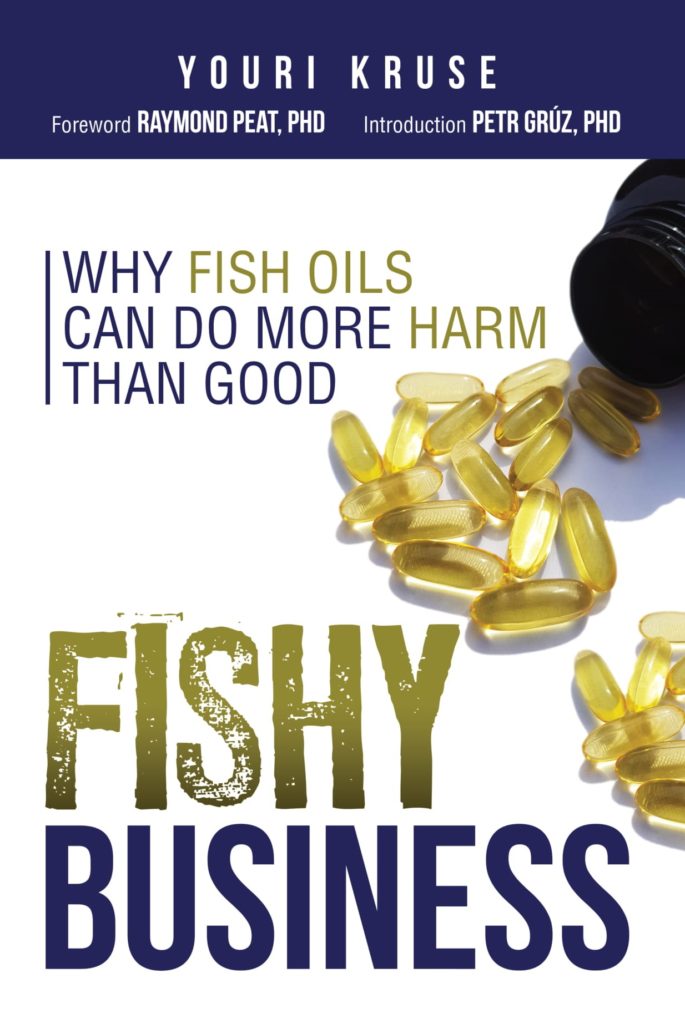Yellow fat disease
In the 1940s into the 50s found that polyunsaturated, especially fish oils, caused yellow fat disease[i][ii]. Yellow fat disease was seen as a vitamin E deficiency and its symptoms included anorexia, muscular dystrophy, fever, flaky skin, inflamed adipose tissue, and accumulation of lipofuscin in adipose tissue.
Big outbreaks occurred around the world in poultry and cattle that were mainly fed canned fish
It was described early on as:
- Enlarged abdomen and edema
- Loss of tone in muscles
- Black, tarry diarrhea
- Rolls of yellow fat with often times hemorrhages around.
- Gelatinous exudate watery fluid between flesh and pelt[iii]
Later studies found that under many conditions the results of fresh or oxidized fish oils were the same in vitamin E deficient animals with regards to yellow fat disease and lipofuscin[iv]. Yellow fat disease is an extreme condition in which edema is common. This edema is likely the result of extreme leakiness of the cell membrane and de-energized cells.
In the 1970’s it was suggested that the linolenic acid, EPA, and DHA (omega 3) are solely responsible for yellow fat disease concluded that yellow fat disease is associated with a strong accumulation of lipofuscin in the reticuloendothelial tissue of the liver, spleen, and lymph nodes. The reticuloendothelial system is a part of the immune systems that focus on phagocytosis, processing antigen and antibodies production, breakdown of aging red blood cells, and storage and circulation of iron. With the accumulation of lipofuscin in the reticuloendothelial system, the immune function is reduced[v]. The reduction of the immune system is one of the ways that fish oils promotes their “positive” functions.
A reduced immune system minimizes inflammation and this is one of the ways why fish oils are seen as anti-inflammatory

[i] QUORTRUP, E. R., GORHAM, J. R. AN) DAVIS, C. L.-Nonsuppurative Panniculitis. (Yellow Fat). p. 228. (4 refs.)
[ii] MASON, K.E.; DAM, H., and GRANADOS, H.: Histological changes in adipose tissue of rats fed a vitamin E deficient diet high in cod liver oil. Anat. Rec. 94: 265 (1946).
[iii] Canadian Journal of Comparative Medicine Steatitis 1 Alberta Mink Vol. XXIl, NO. 7 July, 1956.
[iv] Zbl. Vet. Med. A, 23,645-660 (1976) @ 1976 Verlag Paul Parey, Berlin und Hamburg. ISSN 0300-871 1/ASTM-Coden: ZVRAAX Institute of Veterinary Pathology, Department of General Pathology, University of Utrecht. Early Changes of Yellow Fat Disease in Mink fed a Vitamin-E Deficient Diet supplemented with Fresh or Oxidised Fish Oil BY L. H. J. C. DANSE and W. A. STEENBERGEN-BOTTERWEGWith 13 figures and 6 tables (Received for publication September 20, 1975)
[v] Mech Ageing Dev. 1986 Jul;35(2):161-7. Phagocytosis and lipofuscin accumulation in lymph node macrophages. Hendriks HR, Eestermans IL